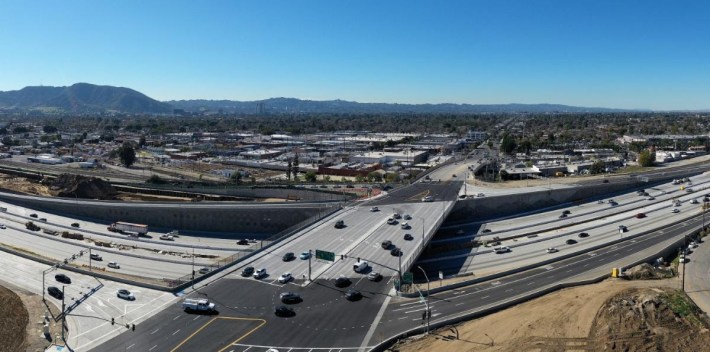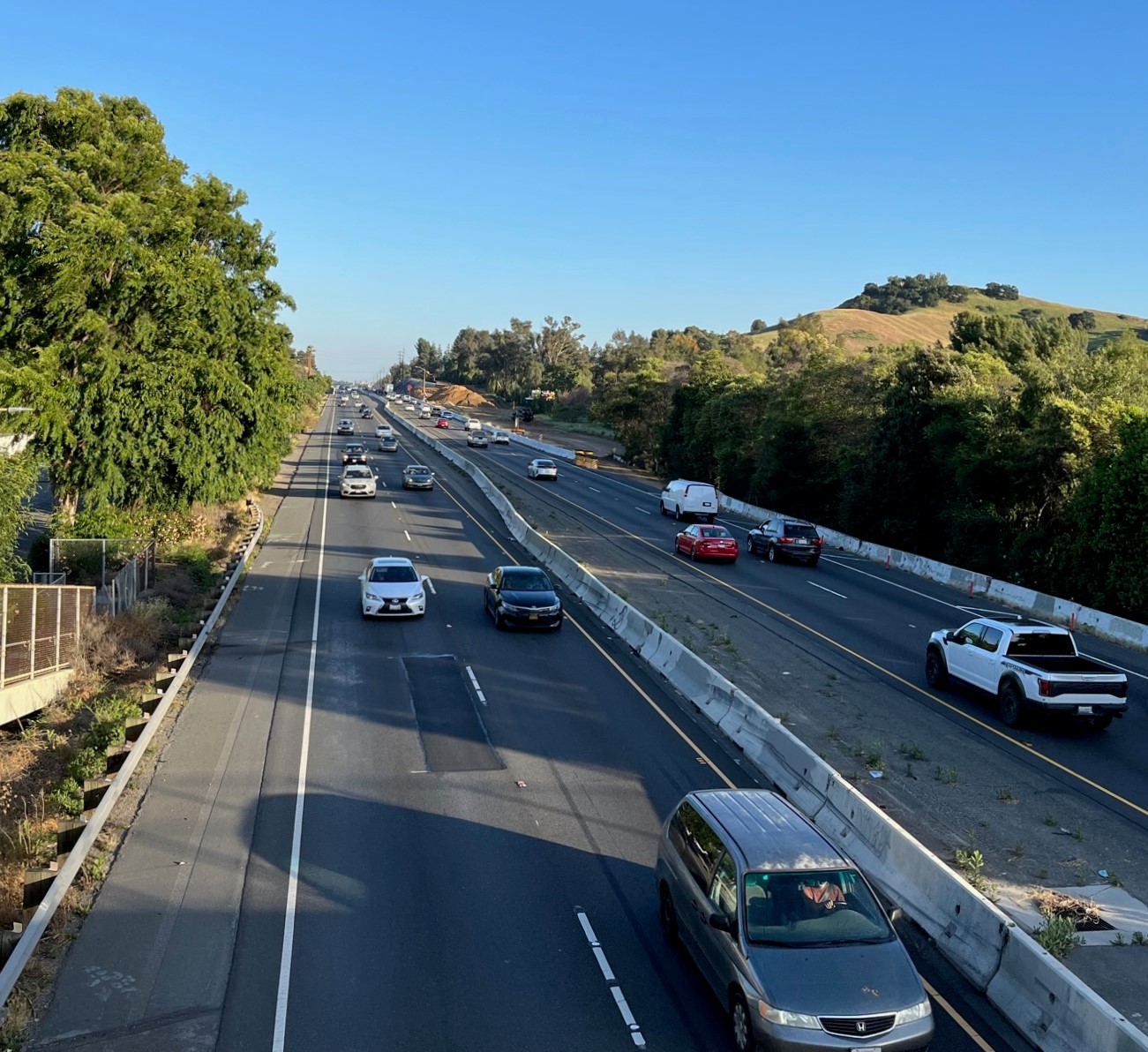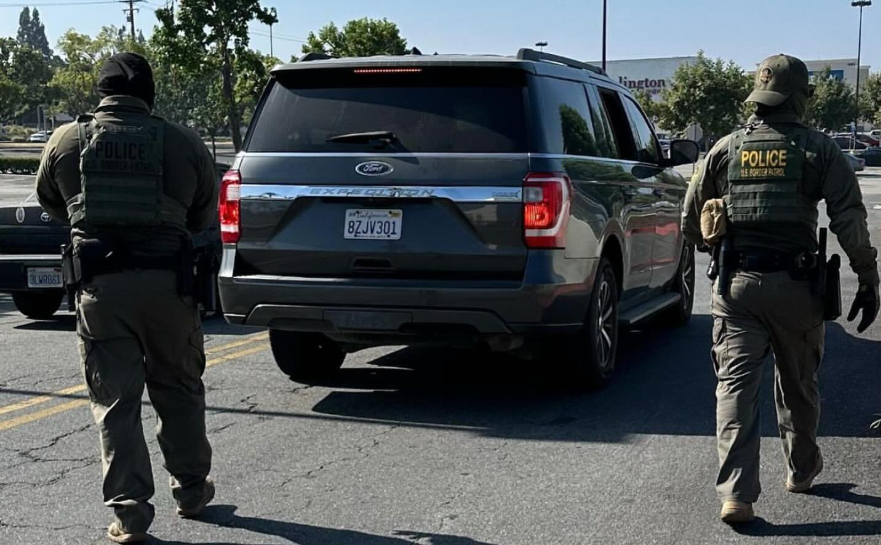It is becoming an annual tradition. At the annual budget hearing, Metro leadership lies through their teeth to justify more and more money for the agency's annual freeway widening budget. This week Metro took another big step toward approving large increases to L.A. County freeway expansion spending.
Last year, the falsehoods included: (These and other Metro FY22 highway budget lies refuted at SBLA's coverage.)
- “We’re not approving freeway expansions… it’s freeway modernization”
- “It’s not highway widening, it is hot spot improvements and modifications.”
- “[In Measure M, there are] not just the improvement projects – you’ve got some widening”
After those lies last year, the Metro board approved an 80 percent increase for the Highway Program budget. This year the proposed Metro Highway Program budget is another 33 percent increase on top of that. In two years, Metro's annual highway expansion budget would go from $264 million to $634 million.
In presenting the Metro Highway Program budget at Wednesday's Budget Hearing [starting minute 27:00], Metro Senior Executive Officer Irene Fine stated:
The Highway Modernization Program budget totals $634 million and, in response to many comments received recently, we'd like to share that there are many different project categorizations under this program, such as supporting local and safety improvements. The largest portion consists of local subregional projects for things like street improvements, on/off ramp improvements, signal synchronization, and bikeway pedestrian and sideway sidewalk improvements. There are also ExpressLanes and HOV improvements, which is conversion of existing lanes. There are also traffic noise reduction projects, with the highway soundwall program benefiting home and businesses along freeway corridors, NextGen Bus Lanes as well for improving bus transit services. [...] Lastly, there are capacity improvement projects, which the scope can include a variety of purposes including soundwalls, extension of truck lanes, bridge repair and replacement, and technology system enhancements.
Fine is not entirely wrong, but her statement is clearly tailored to mislead listeners into thinking that the Metro highway budget is not predominantly about widening freeways, and the ramps and roads that lead to them. More than 80 percent of the proposed FY23 Highway Program budget goes to widening.

The main thing wrong here is Fine is pointing to small exceptional non-highway-widening expenditures to characterize a budget that is predominantly highway widening. One way to see this is by adding the percentages of the FY2023 budget to specific components Fine mentions:
Some percentages in the following paragraph, and some statements regarding bike/ped projects below were corrected 5/31: Twitter user @numble has pointed out that, extrapolating from earlier approvals there may be a few bike/ped/complete streets projects in the FY23 Highway budget - potentially including relatively small expenditures for projects in East L.A., Long Beach, Burbank, and/or the South Bay. Streetsblog stands behind this post's broad assertion that it is misleading for Metro to repeatedly point out a small percentage of complete streets projects that are unrepresentative of the larger Highway program budget's focus on widening freeways/roads/ramps - but the percentages SBLA initially asserted were overly exact, and probably ~1-2 percent off regarding bike/ped/sidewalk and bridge replacement projects.
The Highway Modernization Program budget totals $634 million [100%] and in response to many comments received recently, we'd like to share that there are many different project categorizations under this program, such as supporting local and safety improvements. The largest portion consists of local subregional projects for things like street improvements [widening], on/off ramp improvements [widening], signal synchronization [<3%], and bikeway [0% ~<2%] pedestrian [0% ~<2%] and sideway sidewalk [0% ~<2%] improvements. There are also ExpressLanes [7%] and HOV improvements [predominantly widening] which is conversion of existing lanes [~7%]. There are also traffic noise reduction projects, with the highway soundwall [~3%] program benefitting home and businesses along freeway corridors, NextGen Bus Lanes [2%] as well for improving bus transit services. Lastly, there are capacity improvement projects [widening 80+%] which the scope can include a variety of purposes including soundwalls [~3%], extension of truck lanes [<2%], bridge repair [0% repair without widening] and replacement [predominantly widening], and technology system enhancements [~<1%].
There are also several parts of Fine's statement that are factually wrong.
Myth: "The largest portion [of the FY23 Highway expansion budget] consists of local subregional projects for things like street improvements, on/offramp improvements, signal synchronization, and bikeway pedestrian and sideway sidewalk improvements.
Making a distinction that "subregional" projects are the largest category is ridiculous. The largest category by far is freeway widening projects, which comprise more than eighty percent of the proposed FY23 highway expansion budget. Metro parsing "subregion projects" - which include numerous freeway widenings (plus widening ramps and streets tied to freeway widening) - into a separate category from "capacity improvement projects" is kind of like saying that many restaurants are not restaurants because they are San Gabriel Valley restaurants, San Fernando Valley restaurants, North County restaurants, Westside restaurants, etc. When Metro funds the Gateway Cities subregion to widen the 91 Freeway, or funds the South Bay to widen the 405 Freeway (both actual examples in this FY23 budget), it does not make their freeway widening projects somehow different than the rest of Metro's freeway widening.
Second, the implication here that the highway program includes significant bikeway, pedestrian, or sidewalk improvements is just false misleading.
There are no bikeway projects in the Highway Program FY23 budget.
None.
There are no pedestrianization projects in the Highway Program FY23 budget.
Again, none. While it is difficult to find or confirm any definite bike/ped projects in the FY23 Highway budget, there may be relatively small components of some subregion programs that include funding for a few bike/ped projects in East L.A., Long Beach, Burbank, and/or the South Bay. These are the exceptions that prove the rule: Metro's small percentage of bike/ped improvements are unrepresentative of the Highway budget.
There are some highway widening projects that re-do existing sidewalks when bridges over freeways are widened. But many of these make things worse for walking and bicycling - including by removing sidewalks. One example: as part of Metro's $1.3+ billion 5 Freeway North widening, the Burbank Boulevard Bridge was widened (from seven car lanes to ten car lanes) and the northwest sidewalk was eliminated. (That widened bridge also got a poorly designed unsafe bikeway that leaders are now scrambling to fix even before overall project construction is done.)

Next up, there is this Finance Committee meeting exchange, between Boardmember Mike Bonin and Chief Planning Officer James de la Loza: [starting at minute 19:00]
Bonin: My other question was about the highway stuff. You know we've heard some frustration from people who are saying that in the middle of a pivot point for us societally on climate change, we're increasing highway expansion by a huge amount - 40 percent was mentioned. So I wanted to get a little more info on what's happening there. My understanding - my guess - is that a huge amount of that is expenditures that we're locked into and committed to because of Measure R and Measure M. Am I right in that assumption?
De la Loza: That's correct. And...the predominant projects are focused on HOV - completing gaps between the HOV system - safety improvements such as the 60 - the, uh, 57/60 Freeway where you have the crossover that's - I'm sorry, the 605/60 crossover. So they're not focused at all on just providing, uh, road widening. They're really continuation and completion of projects, again, with the understanding that, you know, we changed directions to a more multimodal approach to dealing with our highways program. When I say "we," I think it's both Metro and Caltrans.
Bonin: Yeah ... I just want to note that if it's Measure R and Measure M, that's stuff that whether we agree with it now or not, in hindsight, those were things that were put into the ballot measures in order to get the ballot measures on the ballot in the first place. And those are the things that brought some sub-regions around. So we're really locked into a lot of that stuff, right?
De la Loza: We are. And they were the result of a bottoms-up approach, working with the sub-regions. So they do reflect specific needs within the sub-regions. And the dollars identified in both measures are targeted to those projects.
Bonin: I share the concern and I'm not wild about it, but I mean we sort of have to get 'em done.
Below are lies in that exchange:
Myth: Metro's FY23 Highway Program is "not focused at all on just providing road widening" but "we changed directions to a more multimodal approach"
Under the proposed FY23 Mero Highway Program budget more than a half-billion dollars would go to widening freeways, ramps, and roads. Denying this is the current program focus is lying. Road widening is not somehow incidental to a multimodal portfolio; the contrary is true for Metro today - multimodal is incidental to a road widening portfolio. The pathetically small amount (around ten to fifteen percent this year) of Highway Program funding not going to widening projects is a fig leaf on a program that has a strong and clear focus on freeway expansion. The Metro Highway Program has focused on highway widening for more than a decade and continues to do so today, and plans to continue this next year.
Myth: Metro's FY23 Highway Program budget is "locked in" according to what voters were promised in sales tax Measures R and M
There are quite a few projects (including under-construction 5 Freeway widening projects that are winding down) that were promised to voters. Metro is now "locked into" these construction contracts. Just continuing those locked-in M/R projects, though, would make for a more-or-less flat annual highway budget - not Metro's proposed 33 percent increase.
What's driving that increase? According to Metro's March staff report, the proposed funding increase is “primarily due to construction activities for I-5 North Capacity Enhancements, SR-57/SR-60 confluence, and progression of I-105 ExpressLane to Project Specification and Engineering phase.”
Looking at those three projects:
- The North County 5 Freeway widening was voter-approved in Measures R and M. Construction got underway last year, so this widening is now locked in.
- The 57/60 Freeways Interchange widening was not promised to voters the way Metro is now proposing. Metro's current budget proposal seeks to accelerate 57/60 construction ahead of its voter-approved FY2025 groundbreaking. Accelerating this project into premature construction now would shift it into the "locked in" list. (Portions of this widening were designed to serve a proposed NFL stadium that was canceled. Rather than proceed with construction, Metro could instead look to scale back the project's unneeded excess scope and cost.)
- Measure M voters approved a 105 Freeway ExpressLanes groundbreaking scheduled for 2027, so the Metro highway budget is seeking project acceleration instead of doing what voters approved.
The Highway Program increases are not just what voters were promised. The current budget is accelerating and increasing freeway widening - while not following through on (much less accelerating) Measure M promises for transit operations and transit capital.
Myth: Metro freeway projects are "safety improvements," not road widening
De la Loza's statement here a bit muddled: "safety improvements such as the 60 - the, uh, 57/60 Freeway where you have the crossover that's - I'm sorry, the 605/60 crossover."
There's no "605/60 crossover" project - nothing touching the 605/60 interchange - in this year's Metro budget.
There is the 57/60 Freeway widening (noted above) which is often justified as a safety project, though the project is adding four general purpose lanes. Metro trots out safety components (many dubious) mainly to justify massive costly capacity expansion projects.
Myth: Metro freeway projects are "focused on completing gaps between the HOV system" not widening
Sure, many Metro freeway widening projects are adding HOV lanes. The South 5 Freeway widening is adding four new lanes, two of which are HOV. The 71 Freeway widening is adding four new lanes, two of which are HOV. The North County 5 Freeway widening is adding new HOV lanes, while adding general purpose auxiliary lanes between on- and offramps. When Metro does its HOV gap projects, they include plenty of general purpose widening alongside the HOV lanes.
For some of these projects, a minimal HOV lane investment is used to justify massive general purpose widening. One example of this is Metro's $1.9 billion widening of the 5 Freeway South. Metro and Caltrans tore out neighborhoods to widen the existing 5 Freeway from ~130 feet to 200+ feet wide. If it was just about two new HOV lanes, the widening could have just added ~25 feet. If Metro had just focused on extending HOV lanes, the project could have been built for less than half of the cost.
If Metro had ever truly been "focused on completing gaps between the HOV system" they could have finished that system by now. Similar to terming freeway expansion projects as "safety" projects, bringing up "HOV gaps" is just a pretense for Metro to continue to widen more and more freeways for general purpose driving.
(It's also deceptive to call the HOV system Metro's "focus," as there are hundreds of millions of dollars worth of FY2022 Metro freeway widening projects that are not adding HOV lanes at all: the 57/60, three 91 Freeway widenings, upcoming 405 widening, SR-138 widenings, the paused lower 710 widening, North 710 corridor projects, and more.)
Note that de la Loza later alluded to "a big change" that is coming to the Highway Program. "We're going to be looking at solutions that are going to be multimodal and integrate first/last-mile and bikeway programs." Just not before July 2023, budget-wise.
Bonin later asked for a report back that includes more information on Highway Program projects. The report back is to include cost breakdowns, VMT (vehicle miles traveled) and GHG (greenhouse gas) analysis, and how the projects follow Metro's adopted Complete Streets policy.
Lastly, one more moment from Wednesday's Finance Committee meeting [minute 11:45]. Metro Boardmember Fernando Dutra listed several transit budget items, then continued, "and also important improvements along the I-5, I-605, and the I-105 ExpressLanes also - all contributing to mass transit."
Myth: Metro freeway widening contributes to transit
No, freeway widening projects on the 5 and the 605 and toll lanes on the 105 Freeway do not contribute to transit. Metro Highway Program staff have made this type of false claim repeatedly (see February 2021 and May 2021 examples), though, when pressed, they have acknowledged that (in a response specifically for the 5 and 605 Freeway widening) freeway expansion would only benefit transit if Metro decides to run buses there at some point in the future.
Metro's large portfolio of freeway widening projects are largely at cross purposes with making Metro transit effective. They proliferate congested loud polluted places hostile to non-car modes.
With all those lies in the air, Metro's Finance Committee gave their unanimous approval to the $8.8 billion FY23 budget.
The proposed budget now goes before the full Metro board for a vote at its meeting next Thursday, May 26, at 10 a.m.







